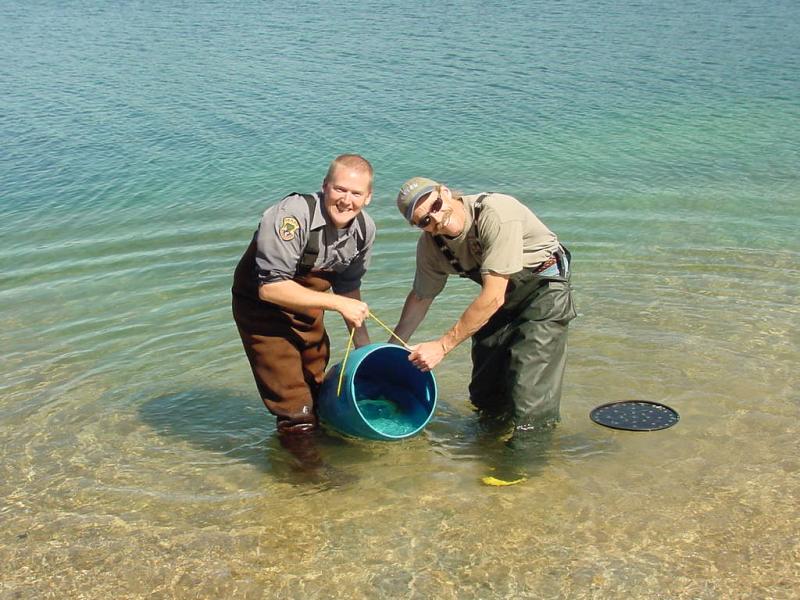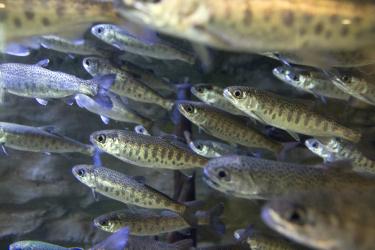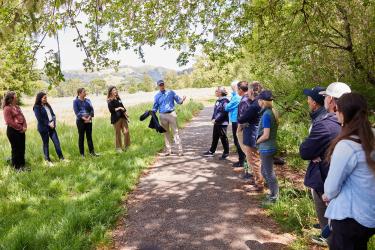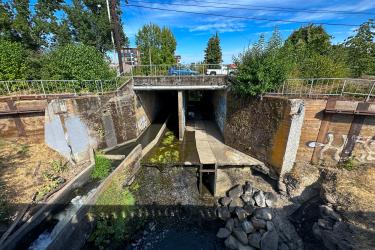In the fall of 1991, Snake River sockeye salmon hovered on the brink of extinction. Thousands of the distinctively red fish had once returned more than 900 miles from the Pacific Ocean. They swam up the Columbia, Snake, and Salmon rivers to Redfish Lake in Idaho every year. They passed eight major dams along the way.
Only four made it in 1991.
The dire situation galvanized regulatory and stakeholder groups. That same year, the Redfish Lake Sockeye Captive Broodstock Program was formed. The program pooled the expertise and efforts of NOAA Fisheries and the Idaho Department of Fish and Game. They collaborate with the Bonneville Power Administration, the Oregon Department of Fish and Wildlife, and the Shoshone-Bannock Tribes of Idaho. The program endeavors to help save the signature species by protecting its remaining genetic diversity.
The next step was to revive the species by reproducing them in hatcheries.
Along came Carlin McAuley, a scientist with a rare blend of fisheries experience. For the next 29 years, Carlin led fish culture operations for NOAA Fisheries Redfish Lake sockeye captive broodstock program. He retired in December, but he has left a lasting legacy. While hard work remains, he helped halt the decline and set these sockeye on a path toward recovery. But he wants everyone to know he didn’t do this alone. He played a role amongst a group of very talented, hard-working people at NOAA.
We recently sat down with Carlin to reflect on his career.
How did you get started?
Good luck and timing played a big role. I’d been working with captive broodstock in private aquaculture when I had a chance encounter with Connie Mahnken, then head of the Center’s Manchester Research Station. He opened the door for me to work for NOAA Fisheries, setting up a captive broodstock program for the endangered Redfish Lake sockeye.
What was the program like when you started?
The program was in dire straits. Only 16 sockeye returned to Redfish Lake between 1991–1998, with the last wild male returning to the lake in 1998. The stock was heading to extinction.
We were starting a captive broodstock program from scratch. The Idaho Department of Fish and Game was also starting a companion captive broodstock. Early on, our focus was on preserving this stock’s genetic diversity using the few remaining fish. The genes from those 16 returning sockeye became the foundation for the broodstock program.
As the program grew, the focus shifted from genetic preservation to production—releasing large numbers of smolts to increase adult returns. The timeline for a production program is 6–7 years. Three years of captive rearing to produce adult spawners. Two years to rear offspring from eggs to smolts for release. And 1–2 years in the ocean before returning to Redfish Lake.
Was there a watershed moment for the program?
The big turning point was 2000. We got 252 adults back that year. To put that in perspective, we’d had just 16 adults total return in the past ten years combined. It was a quantum leap. We knew we could be successful in releasing fish and getting them back from the ocean.
What’s the outlook for Redfish Lake sockeye?
The goal is a self-sustaining stock. I’m cautiously optimistic we’ll get there. But these fish face a lot of challenges—from poor ocean conditions to rising stream temperatures. Basically, the actions of climate change. We’ll have to provide them a helping hand for a while.
What’s drove you to wake up and go to work every day for these past 29 years?
The fish got me up in the morning. I loved coming in to work with the fish. Salmon are amazing! They migrate 900 miles downstream through eight dams, spend a couple of years in the ocean, and then migrate 900 miles back upstream through eight dams to spawn.
Also, I just love this program. I was able to manage the captive broodstock program and the team for my entire career. Most of our team has been together for 20–25 years. Not a lot of people get to stick with something as long as I have. I felt very fortunate.
What’s it like working with the fish?
When you work with fish, you work on their schedule. If they’re ready to do something, you have to be too. Often that means waking up in the dark and working in cold and wet conditions. I remember one time waking up at 3:30 a.m. We started our day by picking up adult fish from the hatchery, then driving 13 hours up to Redfish Lake and releasing them at about 10:00 p.m. By the time we got to the motel at midnight, it had been a 20-hour day. Stressful and exhilarating at the same time!
That sounds like a lot of work. Where did you get your work ethic?
As a teenager, I worked for my uncle at one of Lake Chelan’s first gas station/convenience stores. My uncle was a perfectionist. He had me working 10 hours a day, six days a week. That was hard at the time, but it taught me the meaning of work and dedication.
What will you miss not coming to work every day?
It will be tough. I will miss the routine. That’s all I’ve ever done. People used to ask me why I don’t retire and enjoy myself. I simply replied that I was enjoying myself! The people I’ve worked with and friends I’ve met pursuing my career is something I’ll keep with me forever. It’s been a privilege to work with such a dedicated group of people, all striving toward the same goal.




